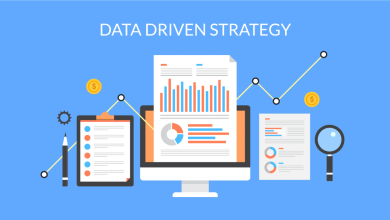
The half-life of a skill is now less than five years. And in some tech fields, it’s half that. In practical terms, this means that every five years, a skill is half as valuable as it was before – an expiry date that’s only getting shorter.
This stat from the World Economic Forum captures a reality some feel daily, people can’t keep up with the pace of change. In the workplace, regardless of whether someone is a graduate at their first job or a mid-career professional, it’s clear that learning can’t stop once onboarding is done. And after that person have been brought ‘up to speed’ for the role.
If the last few years have taught us anything, it’s that we can’t afford to stop learning. None of us, at any level. We need to carry it with us – into every job, every career pivot, every unexpected turn.
Whether it’s adapting to a new technology, stepping into leadership, or learning how to collaborate in a hybrid team, we’re constantly evolving. But in a world full of noise, content overload, and shifting expectations, how do we make continuous learning stick?
Too often, learning is offered in the wrong format or with too little context to make it stick. That’s where technology, and AI specifically, comes into its own. It isn’t meant to replace the human element, but done well, AI can help tailor learning journeys. By simplifying the process, and giving individuals the personalised, flexible development they need to keep growing.
Goodbye static playbooks
At its best, AI functions like a personal learning assistant, whether it’s integrated into a learning platform or not. It analyses where you are now, identifies where you want to go, and designs the path to get you there. Unlike static training catalogues, with rigid skills checklists and generic video lectures, AI tools can recommend content based on real-time performance, personal interests, or even the challenges someone is facing in their current role.
Someone struggling with time management might be nudged towards short, focused resources that fit around their schedule. A new manager might get a curated leadership journey that flexes as they grow in confidence.
It also opens up huge possibilities for inclusive design. With new regulations like the European Accessibility Act, which is coming into force in June 2025, and the UK’s Equality Act and Web Accessibility Regulations, businesses must make their digital learning content accessible to all. AI can help create more flexible learning formats, like generating more listening-friendly versions of text or transforming written content into audio for learners who rely on screen readers or simply prefer to listen.
This kind of smart adaptation is a game-changer, making digital training seem more intuitive, personal and maybe even more human. It removes the guesswork and gives learners exactly what they need, when they need it.
Making personal pathways possible
But personalisation can’t just be left to an individual person. Organisations have a crucial role to play in enabling it.
While obvious, it starts with a change in mindset. Companies need to stop thinking about learning as something that happens at a set time or in a specific course. Instead, they should see it as a continuous part of the employee experience.
From a design perspective, that means building career development frameworks that are flexible. These should highlight the skills needed for future roles and let employees explore the pathways that interest them, alongside required pathways. AI goes a long way in making this more streamlined, in the long run, by helping map out these internal career ladders and matching people to upskilling opportunities based on their current skills and aspirations.
But this technology needs to be underpinned by a supportive network, including open dialogue with managers and a culture that values curiosity over perfection. Meaningful growth doesn’t come from ticking boxes. Employees need to be given permission to explore, reflect, and make mistakes through learning that is connected to purpose.
All about access
Of course, none of this works unless learning is designed to fit around real life. For commutes, coffee breaks, and calendar clashes. In practical terms this means offering flexible formats that fit different learning preferences and energy levels. Intelligent systems can now tailor content formats: audio for on-the-go learning, bite-sized modules for time-starved teams, and interactive scenarios for those who learn best by doing.
As AI continues to advance, it will move from responsive to predictive. Rather than simply recommending content based on current roles or completed courses, AI will begin to map career trajectories and suggest skills employees haven’t yet realised they need. It will help anticipate skills gaps before they become performance issues and empower development (L&D) teams to be proactive rather than reactive.
But that future only works if we build it responsibly. Human oversight, ethical design, and a commitment to data privacy will be non-negotiables. After all, AI can enhance human potential, but it should never replace the human touch.
AI has the potential to transform how we learn, but the rest really depends on us. How we design our systems, how we lead our teams, and how we show up for one another as learners and as people. The future of work isn’t about knowing it all. Businesses should focus on encouraging learning what matters, when it matters, and using available technology to build the confidence to grow from there.




